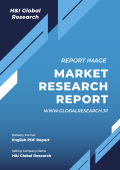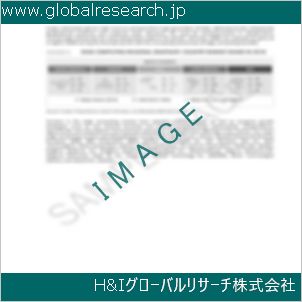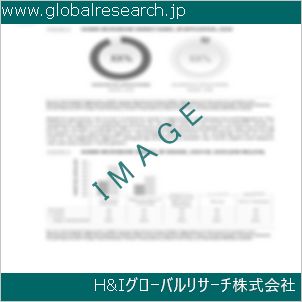Table of Contents
1 Industry Overview of Hydroquinone
1.1 Definition and Specifications of Hydroquinone
1.1.1 Definition of Hydroquinone
1.1.2 Specifications of Hydroquinone
1.2 Classification of Hydroquinone
1.3 Applications of Hydroquinone
1.3.1 Nuclear Application
1.3.2 Non-Nuclear Application
1.4 Industry Chain Structure of Hydroquinone
1.5 Industry Overview and Major Regions Status of Hydroquinone
1.5.1 Industry Overview of Hydroquinone
1.5.2 Global Major Regions Status of Hydroquinone
1.6 Industry Policy Analysis of Hydroquinone
1.7 Industry News Analysis of Hydroquinone
2 Manufacturing Cost Structure Analysis of Hydroquinone
2.1 Raw Material Suppliers and Price Analysis of Hydroquinone
2.2 Equipment Suppliers and Price Analysis of Hydroquinone
2.3 Labor Cost Analysis of Hydroquinone
2.4 Other Costs Analysis of Hydroquinone
2.5 Manufacturing Cost Structure Analysis of Hydroquinone
2.6 Manufacturing Process Analysis of Hydroquinone
3 Technical Data and Manufacturing Plants Analysis of Hydroquinone
3.1 Capacity and Commercial Production Date of Global Hydroquinone Major Manufacturers in 2023
3.2 Manufacturing Plants Distribution of Global Hydroquinone Major Manufacturers in 2023
3.3 R&D Status and Technology Source of Global Hydroquinone Major Manufacturers in 2023
3.4 Raw Materials Sources Analysis of Global Hydroquinone Major Manufacturers in 2023
4 Capacity, Production and Revenue Analysis of Hydroquinone by Regions, Types and Manufacturers
4.1 Global Capacity, Production and Revenue of Hydroquinone by Regions 2019-2024
4.2 Global and Major Regions Capacity, Production, Revenue and Growth Rate of Hydroquinone 2019-2024
4.3 Global Capacity, Production and Revenue of Hydroquinone by Types 2019-2024
4.4 Global Capacity, Production and Revenue of Hydroquinone by Manufacturers 2019-2024
5 Price, Cost, Gross and Gross Margin Analysis of Hydroquinone by Regions, Types and Manufacturers
5.1 Price, Cost, Gross and Gross Margin Analysis of Hydroquinone by Regions 2019-2024
5.2 Price, Cost, Gross and Gross Margin Analysis of Hydroquinone by Types 2019-2024
5.3 Price, Cost, Gross and Gross Margin Analysis of Hydroquinone by Manufacturers 2019-2024
6 Consumption Volume, Consumption Value and Sale Price Analysis of Hydroquinone by Regions, Types and Applications
6.1 Global Consumption Volume and Consumption Value of Hydroquinone by Regions 2019-2024
6.2 Global and Major Regions Consumption Volume, Consumption Value and Growth Rate of Hydroquinone 2019-2024
6.3 Global Consumption Volume and Consumption Value of Hydroquinone by Types 2019-2024
6.4 Global Consumption Volume and Consumption Value of Hydroquinone by Applications 2019-2024
6.5 Sale Price of Hydroquinone by Regions 2019-2024
6.6 Sale Price of Hydroquinone by Types 2019-2024
6.7 Sale Price of Hydroquinone by Applications 2019-2024
6.8 Market Share Analysis of Hydroquinone by Different Sale Price Levels
7 Supply, Import, Export and Consumption Analysis of Hydroquinone
7.1 Supply, Consumption and Gap of Hydroquinone 2019-2024
7.2 Global Capacity, Production, Price, Cost, Revenue, Supply, Import, Export and Consumption of Hydroquinone 2019-2024
7.3 USA Capacity, Production, Price, Cost, Revenue, Supply, Import, Export and Consumption of Hydroquinone 2019-2024
7.4 EU Capacity, Production, Price, Cost, Revenue, Supply, Import, Export and Consumption of Hydroquinone 2019-2024
7.5 China Capacity, Production, Price, Cost, Revenue, Supply, Import, Export and Consumption of Hydroquinone 2019-2024
7.6 Japan Capacity, Production, Price, Cost, Revenue, Supply, Import, Export and Consumption of Hydroquinone 2019-2024
8 Major Manufacturers Analysis of Hydroquinone
8.1 Manufacturer One
8.1.1 Company Profile
8.1.2 Product Picture and Specifications
8.1.2.1 Type I
8.1.2.2 Type II
8.1.2.3 Type III
8.1.3 Capacity, Production, Price, Cost, Gross and Revenue
8.1.4 Contact Information
8.2 Manufacturer Two
8.2.1 Company Profile
8.2.2 Product Picture and Specifications
8.2.2.1 Type I
8.2.2.2 Type II
8.2.2.3 Type III
8.2.3 Capacity, Production, Price, Cost, Gross and Revenue
8.2.4 Contact Information
8.3 Manufacturer Three
8.3.1 Company Profile
8.3.2 Product Picture and Specifications
8.3.2.1 Type I
8.3.2.2 Type II
8.3.2.3 Type III
8.3.3 Capacity, Production, Price, Cost, Gross and Revenue
8.3.4 Contact Information
8.4 Manufacturer Four
8.4.1 Company Profile
8.4.2 Product Picture and Specifications
8.4.2.1 Type I
8.4.2.2 Type II
8.4.2.3 Type III
8.4.3 Capacity, Production, Price, Cost, Gross and Revenue
8.4.4 Contact Information
8.5 Manufacturer Five
8.5.1 Company Profile
8.5.2 Product Picture and Specifications
8.5.2.1 Type I
8.5.2.2 Type II
8.5.2.3 Type III
8.5.3 Capacity, Production, Price, Cost, Gross and Revenue
8.5.4 Contact Information
…
9 Marketing Trader or Distributor Analysis of Hydroquinone
9.1 Marketing Channels Status of Hydroquinone
9.2 Traders or Distributors with Contact Information of Hydroquinone by Regions
9.3 Ex-work Price, Channel Price and End Buyer Price Analysis of Hydroquinone
9.4 Regional Import, Export and Trade Analysis of Hydroquinone
10 Industry Chain Analysis of Hydroquinone
10.1 Upstream Major Raw Materials Suppliers Analysis of Hydroquinone
10.1.1 Major Raw Materials Suppliers with Contact Information Analysis of Hydroquinone
10.1.2 Major Raw Materials Suppliers with Supply Volume Analysis of Hydroquinone by Regions
10.2 Upstream Major Equipment Suppliers Analysis of Hydroquinone
10.2.1 Major Equipment Suppliers with Contact Information Analysis of Hydroquinone
10.2.2 Major Equipment Suppliers with Product Pictures Analysis of Hydroquinone by Regions
10.3 Downstream Major Consumers Analysis of Hydroquinone
10.3.1 Major Consumers with Contact Information Analysis of Hydroquinone
10.3.2 Major Consumers with Consumption Volume Analysis of Hydroquinone by Regions
10.4 Supply Chain Relationship Analysis of Hydroquinone
11 Development Trend of Analysis of Hydroquinone
11.1 Capacity, Production and Revenue Forecast of Hydroquinone by Regions and Types
11.1.1 Global Capacity, Production and Revenue of Hydroquinone by Regions 2024-2029
11.1.2 Global and Major Regions Capacity, Production, Revenue and Growth Rate of Hydroquinone 2024-2029
11.1.3 Global Capacity, Production and Revenue of Hydroquinone by Types 2024-2029
11.2 Consumption Volume and Consumption Value Forecast of Hydroquinone by Regions, Types and Applications
11.2.1 Global Consumption Volume and Consumption Value of Hydroquinone by Regions 2024-2029
11.2.2 Global and Major Regions Consumption Volume, Consumption Value and Growth Rate of Hydroquinone 2024-2029
11.2.3 Global Consumption Volume and Consumption Value of Hydroquinone by Types 2024-2029
11.2.4 Global Consumption Volume and Consumption Value of Hydroquinone by Applications 2024-2029
11.3 Supply, Import, Export and Consumption Forecast of Hydroquinone
11.3.1 Supply, Consumption and Gap of Hydroquinone 2024-2029
11.3.2 Global Capacity, Production, Price, Cost, Revenue, Supply, Import, Export and Consumption of Hydroquinone 2024-2029
11.3.3 USA Capacity, Production, Price, Cost, Revenue, Supply, Import, Export and Consumption of Hydroquinone 2024-2029
11.3.4 EU Capacity, Production, Price, Cost, Revenue, Supply, Import, Export and Consumption of Hydroquinone 2024-2029
11.3.5 China Capacity, Production, Price, Cost, Revenue, Supply, Import, Export and Consumption of Hydroquinone 2024-2029
11.3.6 Japan Capacity, Production, Price, Cost, Revenue, Supply, Import, Export and Consumption of Hydroquinone 2024-2029
12 New Project Investment Feasibility Analysis of Hydroquinone
12.1 New Project SWOT Analysis of Hydroquinone
12.2 New Project Investment Feasibility Analysis of Hydroquinone
13 Conclusion of the Global Hydroquinone (CAS 123-31-9) Industry 2024 Market Research Report
| ※参考情報 ハイドロキノンは、化学式C6H6O2を持つ有機化合物で、CAS番号は123-31-9です。主にフェノール類に分類される化合物であり、白色の結晶または粉末状の物質として存在します。水やエタノールに溶解しますが、エーテルやベンゼンなどの有機溶媒にも溶けやすいという特性があります。この化合物は、非常に強力な還元剤であり、さまざまな化学反応に利用されることが多いです。 ハイドロキノンの特徴として、最も注目されるのはその美白効果です。皮膚におけるメラニンの生成を抑える作用があるため、シミやそばかすの治療に広く用いられています。また、光に対する感受性を低下させる特性もあり、皮膚に対する光ダメージから保護する役割も果たします。そのため、化粧品やスキンケア製品の成分として重宝されており、特にアジアの美白市場では非常に人気があります。 ハイドロキノンにはさまざまな種類があり、用途や濃度に応じて異なる製品が存在します。医療用のハイドロキノンは通常、2%から4%の濃度で処方されますが、市販されている製品では1%未満の濃度のものも流通しています。医療用のものは、皮膚科の医師の指導のもと使用されることが多く、高濃度のものは副作用のリスクがあるため、慎重に用いる必要があります。 ハイドロキノンは、シミ治療の他にも、皮膚のトーンを均一にするために用いられることがあります。また、特定の皮膚疾患、例えば肝斑や色素沈着症状の治療にも効果があるとされています。これらの効果は、肌の色素細胞であるメラノサイトに作用し、メラニンの合成を抑えることによって実現されます。このため、肌を明るくする施術としてエステや美容クリニックでの使用も進んでいます。 また、ハイドロキノンは化学反応においても非常に重要な役割を果たします。例えば、合成化学においては、さまざまな医薬品や化学製品の合成の際に、還元剤として利用されます。特に、芳香族化合物の合成過程では、ほかの化合物との反応を促進し、高効率で目的の生成物を得ることができます。 一方で、ハイドロキノンは使用に際していくつかの注意点があります。特に長期間の使用や高濃度での使用は、皮膚に対する刺激やアレルギー反応を引き起こす可能性があります。さらに、過剰な使用は化学的皮膚炎や白斑を引き起こすことが報告されています。したがって、医療機関での適切な指導のもとで使用することが強く推奨されます。 近年では、ハイドロキノンの代替として、ナイアシンアミドやコウジ酸など、より穏やかな効果を持つ成分が注目されています。これにより、美白市場は多様化しており、消費者は選択肢を持つようになりました。これらの成分は、ハイドロキノンのような強力な効果を持たない分、副作用のリスクも低いため、多くのメーカーがこれらを取り入れた製品を開発・販売しています。 また、ハイドロキノンを使用する際には、日焼け止めの同時使用が重要です。ハイドロキノンは紫外線に対して敏感なため、紫外線が直接肌に当たることを避ける必要があります。日焼け止めを使用することで、効果を最大限に引き出し、安全に使用することができます。 さらに、ハイドロキノンの使用には法律や規制がある国も多いです。特に欧米諸国では、ハイドロキノンの販売が制限されている場合があり、医師の処方が必要とされることが一般的です。日本においても、医療機関での使用が主流であり、一般的な店舗での購入は限られています。 結論として、ハイドロキノンはその強力な美白効果と多様な応用によって、スキンケアだけでなく化学合成の分野でも非常に重要な役割を果たしていますが、適切な使用法やリスク管理が求められる成分であることを理解しておくことが必要です。使用を検討されている方は、必ず専門家のアドバイスを受け、自らの肌の状態に適した方法で使用することをお勧めします。 |
❖ 免責事項 ❖
http://www.globalresearch.jp/disclaimer












